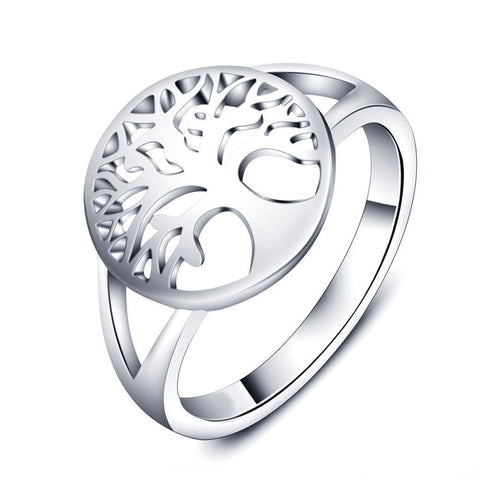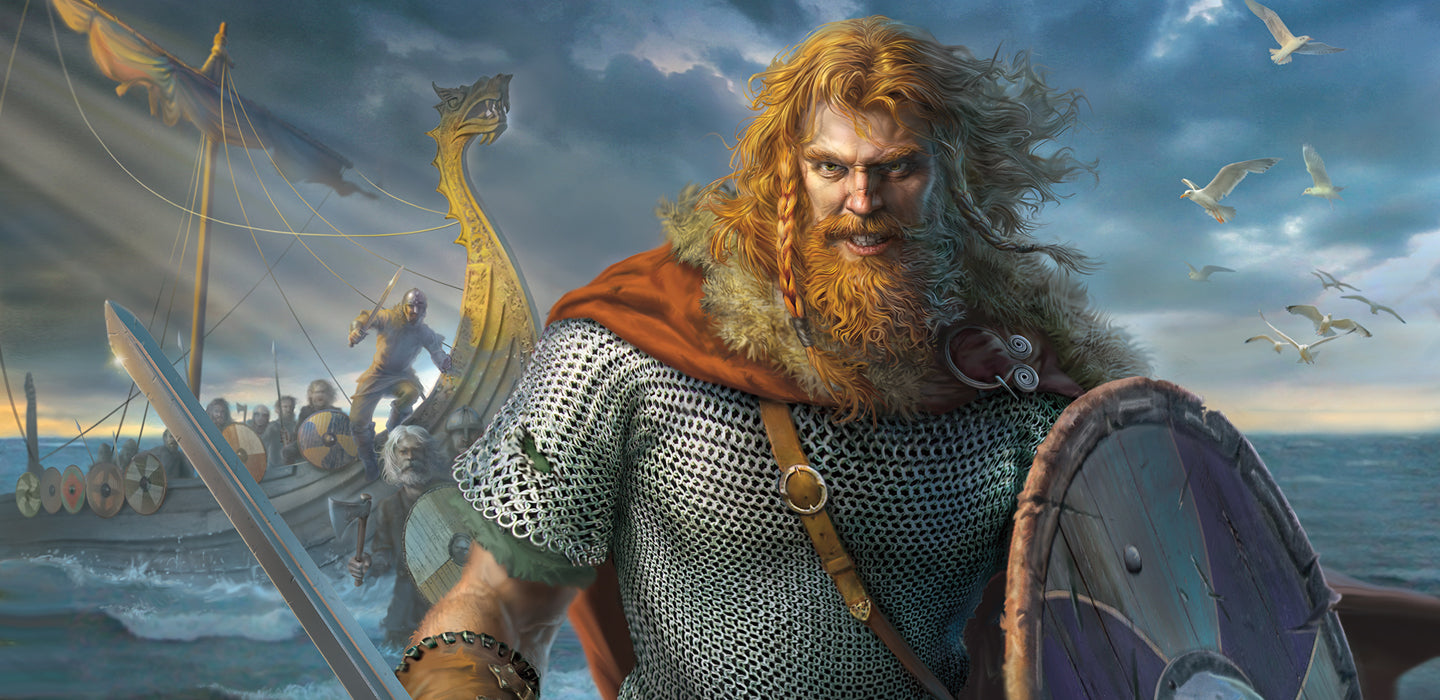
The most expensive weapon was the sword, as it took the most iron to make. Rich men owned swords, the most prestigious weapon. Swords were double-edged and about 35 inches long. Most were pattern-welded, which means wrought iron strips and steel were twisted together then hammered into a blade with a hardened edge. Swords were often highly decorated and many had names such as Blood-hungry or Leg-biter. Vikings carried their swords in scabbards, worn over the shoulder and always accessible to the right hand.
All Viking men would carry a round shield for protection. How rich a Viking was determined his defensive weapons. A rich man might also own chainmail and an iron helmet. Chainmail was difficult to make and no doubt quite expensive. Helmets were basically an iron bowl that protected the head, and many had a nose piece to protect the face. Poorer Vikings without access to chainmail wore thick, padded leather garments which gave some protection from edged weapons.
Viking shields could be up to a meter wide. They were made of wooden boards riveted together with an central hole for a hand grip. Shields were also highly decorated and some were painted with patterns or mythological heroes."
These weapons may be simple but when always kept at close reach they were easy to stay vigilant at night and always rousing for the next time to prove themselves. The knights on the other hand had their own feats and and set of tools to work with.
Dirk H. Breiding explains that, "First, knights rarely fought alone, nor did medieval and Renaissance armies consist entirely of mounted knights. Although knights were the dominant force of most of these armies, they were invariably—and with time increasingly so—supported (and opposed) by foot soldiers, such as archers, pikemen, crossbowmen, and handgunners. During a campaign, a knight depended on a small host of retainers, squires, and attendants who lent armed support and looked after his horses, armor, and other equipment—not to mention peasants and craftsmen, who made the organization of a feudal society with its warrior class possible in the first place.
Second, it is wrong to assume that every nobleman was a knight. Knights were not born but created, by other knights, feudal lords, or sometimes priests. And, under certain conditions, people of non-noble birth could be knighted (although the knighting was often regarded as their admission into lower nobility). On some occasions, mercenaries or civilians fighting as ordinary soldiers could be knighted for exceptional displays of courage and valor, while in later times a knighthood could be bought.

In other words, it was by no means an exclusive right of the knight to wear and fight in armor. Foot soldiers such as mercenaries, or groups of retainers comprising peasants, as well as burghers, also participated in armed conflict and accordingly protected themselves with armor of varying quality and extent.
WORKS CITED
1. "Kjølberg, Tor. “Health and Medicine in the Viking Scandinavia.” Daily Scandinavian, 13 Jan. 2021, https://www.dailyscandinavian.com/health-and-medicine-in-the-viking-scandinavia/.
2.“Viking Weapons and Armor.” History, 29 May 2018, https://www.historyonthenet.com/viking-weapons-and-armor.






Leave a comment
This site is protected by reCAPTCHA and the Google Privacy Policy and Terms of Service apply.